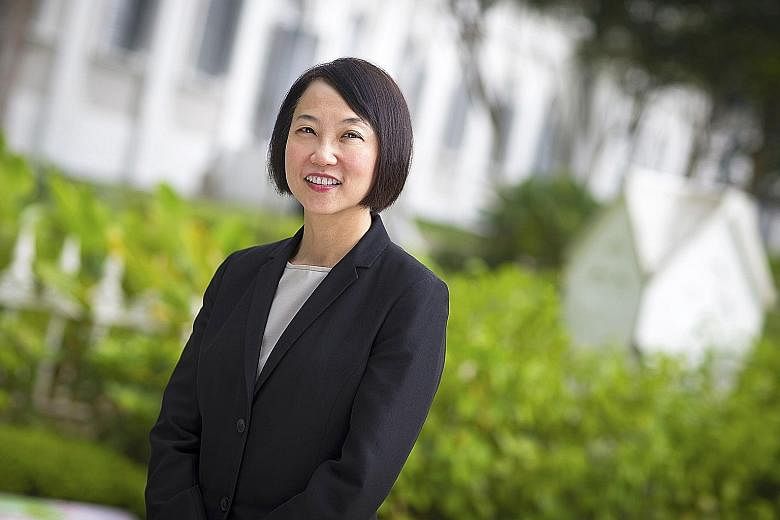Asean was born at a time of great change for South-east Asia, with decolonisation, rapid industrialisation and economic uncertainty. Today, at 50, Asean faces new economic alliances, a new "industrialisation" landscape known as Industry 4.0, and economic uncertainty.
The Asean Economic Community (AEC), launched at the end of 2015 to draw the 10 member states closer in economic integration and cooperation, has much potential since it consists of a market of about 600 million people. It has an important role to play in unlocking economic opportunities for its businesses and people.
While Asean has been criticised at times for what appears to be a slow pace of progress, a great deal has, in fact, been achieved in the economic arena over the years, before the AEC was launched.
Import tariffs on goods among Asean member states have been almost completely eliminated.
Attention has now shifted to other types of obstacles, often called non-tariff measures (NTMs), which still impede trade in the region. NTMs faced by businesses include cumbersome documentary requirements, having to obtain approvals for the same transaction from multiple agencies, unavailability of online services for compliance requirements and other requirements for goods to be sold, such as testing and inspections.
While free trade agreements (FTAs) with preferred trade partners can remove some obstacles, they do not remove all. And, as many Asean businesses operate in value chains with global operations, it is not sufficient to rely on FTAs alone to remove obstacles in a piecemeal manner.
Asean needs to be proactive to capture economic opportunities beyond those shaped by requests of FTA partners.
IDENTIFYING KEY LEGAL BARRIERS
Legal barriers can slow down commercial activity as well as add to business costs. Last year, my colleagues, associate professors Pearlie Koh and Yip Man, and I at the Singapore Management University School of Law embarked on a study to identify key legal barriers faced by businesses in Asean.
Our research focused on these main areas: corporate, trade and investment, land use and dispute settlement barriers, and gaps in legal information. The study drew on information and observations from sources, including academic research, business surveys and roundtable discussions with business representatives, regulators and academics in Asean.
The team's interim report, launched on Aug 3, presented policymakers with a number of preliminary recommendations. (The final report will be out next year.) One is that while Asean has identified a number of "priority" sectors for accelerated liberalisation over the years, these are not well aligned to address modern commercial and global value chain needs. For example, while there are efforts to liberalise trade in goods and services under the areas of "e-Asean" - which include Internet trade in goods and services - and logistics, these areas have not been included as priority sectors in Asean's investment liberalisation agenda.
Second, a number of NTMs and foreign investment restrictions exist even in Asean "priority" sectors. For example, foreign ownership restrictions continue to exist in relation to businesses in services related to e-commerce, logistics and infrastructure - all identified as important areas under the AEC Blueprint 2025, the economic integration guiding plan for the next several years.
Prioritisation of liberalisation efforts across three areas - goods, services and investment - is therefore currently not closely coordinated. This means that while there are liberalisation and facilitation efforts, these are not being conducted optimally to best meet priority commercial needs.
In contrast, manufacturers, service providers, global value chains and their users require support in all these three areas. Industry 4.0 is characterised by fast customer service and delivery, e-commerce, sophisticated logistics operations, global value chains and the increasing use of technology in financial services - such as in fintech - to facilitate trade.
A NEED TO SHIFT GEARS
It requires Asean to shift gears, reassess the needs of such chains and to respond with priority actions.
Infrastructure - which is often the subject of complaint in Asean and necessary for commerce to operate smoothly and cost-effectively - is also an important component of this reassessment.
One of the recommendations in the interim report is that Asean could augment its present priority sectors by drawing together four key areas as a new priority cluster: e-services, logistics, financial services and infrastructure services.
These four areas undergird modern cross-border commerce, support global production chains and are critical to powering the AEC for Industry 4.0.
They require the focused and coordinated attention of Asean policymakers.
Another area of concern for businesses is land rights. Establishing land titles or ownership in some Asean countries can be an unclear process and land disputes often arise.
Impediments also exist in the resolution of cross-border commercial disputes in Asean, such as those relating to language requirements, and an unfamiliarity with handling cross-border enforcement of judgments and arbitration awards in some countries.
For small and medium-sized enterprises (SMEs) in Asean with less resources than multinationals, such legal barriers pose even greater challenges. This is significant, since Asean SMEs are being encouraged to participate more in global value chains and cross-border investment activity.
Much work needs to be done by Asean to propel the AEC further forward. With all its potential and promise, the AEC needs to be a more finely tuned engine which will carry its constituents forward in the 21st century, in a business-friendly and commercial needs-responsive manner.
- The writer is professor of law at the Singapore Management University School of Law.
- S.E.A. View is a weekly column on South-east Asian issues.


